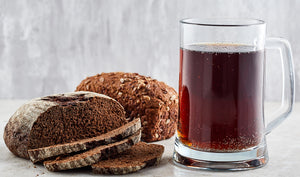Country of Origin

History
Despite the name, Russian Imperial Stout originated in England in the 18th Century. During this time, stouts and porters were gaining popularity throughout England and Peter the Great of Russia fell in love with these dark brews during a visit.
While it's not known for certain, many historians have traced the first Russian Imperial Stout to the Anchor Brewery of London, owned by Henry Thrale. After a failed attempt to send porter to Russia (it spoiled on the way), Anchor Brewery brewed a beer with a higher alcohol content and higher bitterness, what we now know as Russian Imperial Stout. Empress Catherine the Great became a fan of the beer and regular shipments were sent from England to Russia for her during her reign.
Currently, the majority of Russian Imperial Stouts are brewed in America, with an alcohol content of 9% or above (some as high as 22%).
Profile
A proper Russian Imperial Stout should have a rich and full-bodied flavour. Roasted malts should come through as the main flavour and aroma, with a hint of bitterness from the hops. Aromas and flavours of coffee and bitter chocolate are present, with underlying notes of caramel, molasses and sometimes raisins and plums. Expect a dry to moderately sweet finish to this brew.
Serving
Russian Imperial Stout is typically served in a snifter around 55º F (12º C) or cellar temperature.
Food Pairings
This rich, heavy beer pairs well with dark meats, stews and steaks are popular pairings. Like most dark brews, rich chocolate desserts perfectly compliment this beer. However, to get the most out of your brew pair it with cheese, but not just any cheese - the stinkier the better! Brie, camembert and blue cheese will bring out the most flavour in your Russian Imperial Stout.



Brewing tips
- A Proper Grain Bill. The right type and amount of grains are important to any beer, but for a beer of this caliber it's crucial - and you're going to need a lot of grains! You'll want 3.5 kg/gallon and at least 20% dark malts.
- Use A Yeast Starter. This big brew needs a lot of yeast to get going. Using a healthy 2-3 litre starter is the way to go. Don't know how to make a starter? Check out our step by step instructions here.
- Age It. You can enjoy your brew when it's ready, but a Russian Imperial Stout deserves some cellar time. Holding onto this brew for a year is not unheard of, and it's worth the wait.
Want to brew your own Russian Imperial Stout?
Try Brew HQ's Russian Imperial Stout recipe kit.



